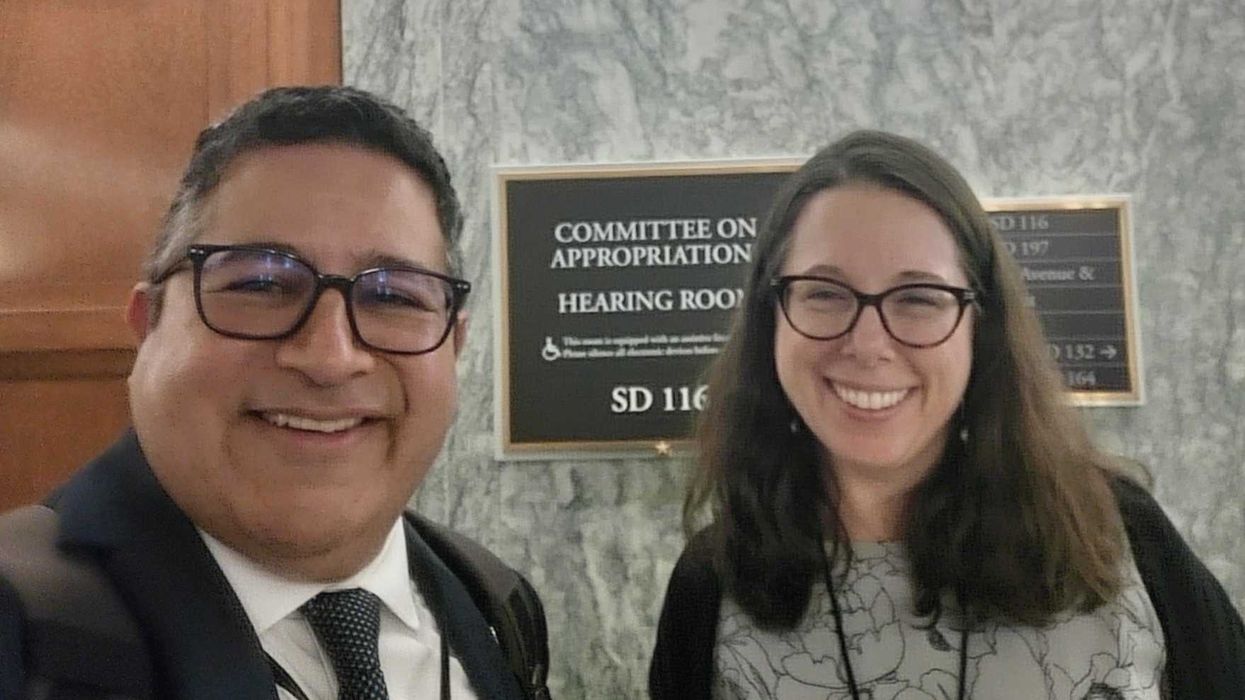Miller is executive director of Nonprofit VOTE, which works to help other nonprofits across the nation boost civic engagement and voter turnout among their allies.
Our democracy is a chorus, one that only improves when more and diverse voices join, adding richness to the sound. Despite the volume of last year's election — one that broke a century-old record for voter turnout — there were nonetheless missing and underrepresented voices. Those gaps in turnout are even more pronounced in local election cycles like 2021, resulting in an older, whiter electorate.
So how do we achieve a truly representative electorate? Voter-friendly policies are important, but they are not enough by themselves. Yes, everyone can have a right to a music stand and a song book, but who is conducting the auditions? In the end, voter turnout is largely a reflection of who is contacted about voting ... and who is not.
Political parties and campaigns have failed to close voter participation gaps because that's not their goal. Their goal is to win an election, not foster an inclusive electorate. Even the most well-meaning campaigns have to prioritize their resources on "likely" voters — the experienced singers who performed last time. The uninvited singers don't show and the cycle repeats itself.
So who has the capacity and motivation to expand the invite list and create the truly diverse and representative chorus of voices? One key to that question is America's nonprofits, from food pantries to housing clinics, which are motivated by broader values of inclusivity and ensuring the communities they serve are heard.
The newly-released Nonprofit Power Report, which details our work with 180 nonprofits across seven states in 2020, shows that nonprofits that marry voter engagement with their mission can help foster a more inclusive and representative democracy. It also provides a roadmap for nonprofit leaders eager to ensure our country lives up to its promise as a diverse chorus of citizenry.
The report explores nonprofit reach and impact on turnout among other things. Let's start with whom nonprofits reach.
Nonprofits typically offer their services to the very communities that are most underrepresented in our democracy. So it only makes sense that when those same organizations do voter engagement work, they are engaging a part of the electorate most often left out of the national conversation. In fact, the report shows that voters engaged by nonprofits in our program were:
- More than twice as likely to be voters of color.
- More than twice as likely to earn less than $30,000 annually.
- Nearly twice as likely to be young (18-24).
Often described as "low propensity" voters, these groups are rarely contacted by political campaigns. They represent the choral singers who don't get invited. Without that contact, they don't show up to the polls and the next election sees candidates once again not engaging them — completing the vicious cycle of exclusion.
As trusted actors with a vested interest in uplifting the communities they serve, nonprofits can sow the seeds of real and inclusive political participation. Where campaigns see low-propensity voters, nonprofits see high-potential voters hungry for genuine engagement and respect.
The Covid pandemic also provided a learning opportunity as many nonprofits pivoted to online and digital strategies, while others continued in-person engagement with social distancing and PPEs. The organizations that did Covid-safe, in-person engagement were 1.7 times more likely to reach low-income voters and 1.4 times more likely to reach voters of color than those who relied on digital strategies.
But reaching voters is just the first step in ensuring our democracy lives up to its promise. What impact do nonprofits have in getting those newly engaged voters, some for the first time, to the polls?
The Nonprofit Power Report shows that voters engaged by nonprofits have a turnout advantage over voters not contacted by nonprofits. Even in a highly saturated election year like 2020, voters engaged by nonprofits saw their turnout increase by 3 percentage points. However, when we dialed into specific voter demographics, especially people of color, young voters and low-income voters, the results were even more encouraging:
- Low-income voters saw a 7 percentage point boost.
- Asian American and Pacific Islander voters saw a 6 percentage point boost.
- Hispanic voters saw a 5 percentage point boost.
- Young voters saw a 5 percentage point boost.
At Nonprofit VOTE, we believe in this work because we believe in the power of nonprofits. Whether that's through hands-on training, our webinar series, robust resource library or research, we know that organizations genuinely embedded in their communities can be powerhouses for democracy. That's why we encourage you to take a deep dive into the Nonprofit Power Report, including the Practitioner's Report providing a roadmap for your organization.
In the end, there is no question that nonprofits that commit to voter engagement can have a positive impact on the communities they serve and the nation at large. The only question is what role your organization will play to ensure our democracy is a song for all, by all.


















